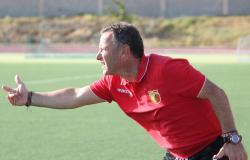As is now known, by will of the two curators the Israeli pavilion at the Venice Biennale will remain closed to the public until an agreement is reached on the hostages in the hands of Hamas and on the ceasefire. Coinciding with the inauguration of the 60th international exhibition, starting from Sunday “I confines dell’alterità / The Contours of Otherness” will open, a contemporary art exhibition curated by the Jewish museum of Venice with installations in three areas of the ancient ghetto (Spazio Ikona, Spazio Lab, Spazio Azzime) and some Israeli artists among the protagonists. Unveiled to the press this morning, the exhibition is curated by the museum’s director Marcella Ansaldi with the collaboration of Jemma Elliott-Israelson and Avi Ifergan and brings attention to the theme of travel, pursued or suffered, and the crisis of cultural identity that can arise. Among the works on display is “A transferable safe space”, created by the Israeli artist Amit Berman after spending a period away from family, friends and domestic intimacy, poised between «preservation of roots» and adaptation « to a new cultural context”. Her compatriot Elisheva Revah instead offers a reflection on Challah, the Sabbath bread, which in a video she associates “with migration, femininity and the concept of home within the diaspora”. Comparing cultures, sensibilities and knowledge on the theme of otherness «has produced a very interesting artistic and human experience», declared Ansaldi in presenting the salient features of an exhibition which is itself a message.
“There is perhaps no place more than the Ghetto of Venice that can indicate the path to coexistence between different people”, noted the president of the Venetian Jewish Community Dario Calimani, not by chance. «Built in suspicion, hosted with the distrust dedicated to all diversity, the Ghetto offers itself today as a welcoming space, an open space that affirms the principle of hospitality». The exhibition, underlines Calimani with Pagine Ebraiche, «is inaugurated at a time in which Israel and Judaism are being speciously questioned; and it is significant that it is held in this neighborhood, which was a place of segregation and where marginalized people from many places were able to develop a coexistence among themselves and with the outside world, promoting life and culture.” Developing culture is also a mission of the present. «In November we hope to complete the restoration work on the Jewish Museum and be able to reopen it, on that occasion, almost entirely. It will have a new face and will be projected into the future.”
(Pictured: Challah of Elisheva Revah)
Tags: VENICE boundaries otherness art protagonist heart Ghetto





